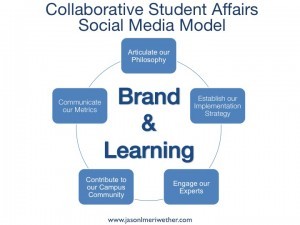Erik Qualman's Blog, page 521
September 1, 2015
4 Tips To Increase Brand Exposure On Social Media

Social media is obviously the best possible option to gain exposure for small, medium, and even large companies. It is a way for even the smallest brand out there to increase its presence through various cheap, or free social media campaigns. This is an opportunity that cannot be dismissed.
The problem is that most small brand owners remain focused on something else. For instance, the common approach is to learn how to start a blog online and then focus on that. In this case you get to create a great blog and then you have no traffic since you do not learn how to promote it. The same thing happens with most small companies that try to promote their brands on social media. They have great profiles but exposure is low. Here are some tips to fix that.
Always Create Content That Is Valuable
This is definitely the one thing that is the most important at the end of the day. All content that you create has to add value to a topic or a conversation. It has to be inspiring, controversial, informative or funny. The quality content is really valuable as it enriches word of mouth marketing campaigns, making any social media page more attractive for visitors.
Always Interact With The Community
After people notice the content that you offer, they will comment, like, share and so on. Good communication and interaction is very important at this phase. Especially since this would drastically increase the possibility that you make a sale, get more traffic to your pages, or that your popularity will be higher.
What you need to do is start a good dialogue with the followers. You will find it difficult at first but as soon as you start, posts will become more interesting for their friends to read and the experience would be much more fun for everyone involved.
Localize Social Media Pages
It is ideal to create websites and blogs for all the localities where business is done. Local SEO is highly important for small companies and this extends to social media profiles. In case you did not know, Google now lists Twitter posts. This is just an example of the power of optimization when talking about social media profiles. Facebook pages have been appearing in results for a long time now. When you always use proper keywords and hashtags in your posts, you increase the possibility that people will find your profiles in search results.
Hire A Good Full Time Manager
Social media managers are not usually considered by the small companies because operations are always done on tight margins. Cost cutting is almost always a priority. There is a belief that it is not at all difficult to manage social media pages so the process is usually done in-house. This can be a mistake. It is a much better idea to hire a full time manager because he/she will have the necessary experience to handle things in a highly effective way. Results appear faster, which is definitely what you want.
[image error]
Put Some Bark in Your Social Media

A house is more of a home with a dog.
A dog loves you unconditionally, becomes part of your kids’ life and childhood memories, provides companionship and helps you feel safe and secure. Sure, they may shed a lot and chew your shoes, but it’s worth it, isn’t it?
Now that you’ve decided, how do you find that perfect dog?
Social Networking Has Some Bite
Back in the day, you could peruse the classified ads in the newspaper for your perfect dog, or buy a dog book for information. But today, you’re going to get helpful information from social media.
When you are searching for a dog, you’ll have a million questions from what size dog do I want, what’s the best breed for my family, what are the best training methods and as the following article looks at, how to avoid dog bite liability? Yes, as great a friend as your dog can be to your family and even many others, you want to find a breed that is not likely to be apt to bite someone and your wallet at the same time.
Social media can help you with all of these and whatever else you want to know.
So skip the newspaper and take a look at social media for finding your new friend:
• Ask your Facebook friends – People love talking about their dogs. Ask on your social media sites what dogs people love and why. Match up their reasons to what you are looking for, and you may have a few good, realistic choices.
• Check out your local shelter’s social media – Not only will you find hours and locations, but shelters also often post a pet of the day or week. When you find one face who you can’t look away from, that may be your forever friend.
• Take a look at social media from breed specific rescue groups – You’ll find lots of information on the breeds, like how much exercise they need or some health conditions specific to that breed. These sites have excellent information because the rescue groups try hard to place dogs in homes that will keep them. They know why dogs are given up and don’t want to see it happen.
• Turn to YouTube for training help – Before you get your dog, research some training methods. YouTube can help you here with breed specific tips as well as general training methods. You can see what the time you’ll be investing in looks like, and you may even stumble upon some local trainers you’d like to work with.
• Use pet specific social networking, i.e. “petworking.” Sites like Shelter Me and Dogster to find not only helpful advice, like about taking your dog on a road trip, but even your actual pet.
Big Step in Your Life
Deciding to get a dog to share your home with is a big step. It’s no fly by night decision, and this will be a commitment for years to come.
Once you’ve made the decision, you want to get the right dog, one that fits your lifestyle and your family.
Don’t go by cuteness alone; make sure your dog’s needs fit what you can offer. Too many dogs are given up and struggle for homes.
When you open your home to a dog, you’ve opened it up to a forever friend.
Maybe it takes some work, but it’s very worth it – you’ll see!
Photo credit: Image courtesy of artur84 at FreeDigitalPhotos.net
[image error]
August 31, 2015
How Customer Reviews Can Boost Your Social Media Marketing Campaign

There are plenty of opportunities to get your company’s message out across the vast social media highway. But you don’t have to blanket every single social network in order to be effective. Instead, work with the platforms that appeal to your customer base and that you know you could dominate with your expertise and resources.
That appeal should also include the opportunity for your customers to voice their opinions. If there is one thing that living in the Internet age has taught us, it is that everyone has an opinion they are just itching to share. When those opinions come in the form of reviews, you can put them to work powering up your brand. Consider these benefits of utilizing customer reviews:
Reviews Are Checked By Shoppers First
We are definitely a review-centric kind of society. Whether you’re headed out to a new movie, going to a restaurant or looking for a car, you want to find out what other people think first. Reading a positive review boosts a customer’s spending confidence. Reviews are already being written about your company. The question then becomes: Do you want to be the primary source for those reviews? The answer should be a resounding yes.
Reviews Show Product Confidence
Not only will a customer gain spending confidence with reviews, but they also demonstrate product confidence from your company. When you post customer reviews, you’re showing that you are proud of your products or services. You want the whole world to know what your satisfied customers have to say. That kind of confidence goes a long way toward building brand loyalty.
Reviews Are a Form of Customer Engagement
When it comes to posting reviews, you have two options: Let them stand on their own or get involved. Since you want to broaden your social media reach, allowing a forum to comment on reviews will be extremely helpful. This is where the issue of posting negative reviews can actually turn into a positive. If you are able to respond to a negative review and remedy a problem, then you’re showing all your customers you care about their business. You might not be able to turn around every negative review, but at least you’re being open and honest. That matters a lot in a competitive marketplace.
Reviews Can Boost Your SEO
Whether they know it or not, customers who are writing reviews are actually boosting your SEO. That’s because those reviews will be loaded with the exact keywords you need to improve your search engine rankings. Plus, they will be the kind of organic content that search engines prefer. That is a win/win.
Bottom line: Don’t run from online customer reviews. Embrace them and make them a key component of your overall social media marketing campaign. It’s the best way for your business to get two thumbs up.
[image error]
Apple Fall Event Announced

THE STORY APPLE FALL EVENT ANNOUNCED
It’s happening. Prepare yourselves Apple fanboys. It was announced that Apple will be holding a press event in San Francisco on September 9th (Source: CNN). After much speculation about when the fall event will be and what will be announced at it we finally have a definite date but are still speculating the announcements. Let’s just pretend we have no idea that new iPhones are coming.
Did you get your invite?
The invites have been sent but if you didn’t get yours don’t worry, you can watch it online. Or ask Siri. In the invitations sent out by Apple they told invitees to say to Siri, “Hey Siri, give us a hint.” Siri has some sassy responses to this including:
-”The only hint I can give you is a hint of lime. And that there’s a big announcement on September 9th.”
-”You’re cute when you’re desperate for information.”
Gosh, Siri can you tone down the sass? (Source: CNN).
DA SKIM
It’s expected that Apple will announce their iPhone 6S which has a faster processor and better camera. It’s rumored that they may announce a new “pro” model of the iPad. Although a spokesperson for Apple denied commenting, Apple has released new phones on September 9th for the past 3 years…so we can expect the tradition to keep going. (Source: CNN).
Quote of the Day: “Oh It’s Just A Self-Driving Car”
Google has been working on their self driving car project for ages now. The company has been testing out the two seater, 25 mph, airbag free prototype near their headquarters in Mountain View, CA. Google is now bringing a few self driving Lexus RH 450h SUVs to Austin, TX to test out the cars in a new city…lucky Austin! The Lexus RH 450H SUVs are equipped with the equipment needed for autonomous vehicles. Live in Austin? Well Google wants you to report on the self driving cars here…because whether you are a car, or whether you are a person, What Happens in Vegas, or in this case Austin, stays on YouTube. Google owns YouTube too BTW. (Source: The Washington Post).
[image error]
Creating a Collaborative Student Affairs Social Media Strategy

As the Fall 2015 semester begins, there are a number of new opportunities to engage students using social media and digital technology. For many professionals in student affairs, there are a number of potential partners and stakeholders who are ready to initiate social media strategies. There are also limitations to implementing social media plans such as limited funding, reticence to embrace social media as an educational tool, and lack of partners among staff and faculty.
In his book Engaging Students through Social Media: Evidence Based Practices for Use in Student Affairs, Dr. Rey Junco discusses the challenges student affairs professionals face when implementing social media-focused programming. Junco describes “social media skeptics” as faculty or upper-level professionals in the field whose attitudes are rooted in limited exposure and familiarity with social media as tools for learning and engagement. Junco also discusses “social media crusaders” as professionals who have maintained social media as an active part of their development, career, and life experiences. The dichotomy described by Junco may apply to many of our campus colleagues who could fall on either end of the spectrum or somewhere in between. To help mitigate this challenge, I offer a five-step model that is framed by collaboration, strategy, branding, and value for student learning.

Meriwether Collaborative Student Affairs Social Media Model 2015
Articulate our Philosophy
My first ever Socialnomics column, Social Media’s Rise from College Outsider to Campus All Star, discussed the fear, reticence, and outright negativity I experienced when conducting a session about social media at a 2009 conference. In that session, I realized how important a clearly articulated philosophy would be if digital engagement was to remain significant in my student affairs work. As such, an important outcome of articulating our philosophy is the ability to mitigate roadblocks by colleagues who are resistant to social media or afraid of scaling an aggressive digital agenda. Framing our philosophy in a manner that is rooted in scholarship, best practices, and the ability to measure learning and engagement is the best method of assuaging concerns and removing barriers to our social media strategic plan. Discussing the potential gains from our social media and digital education philosophy can also help to energize colleagues who are invested in digital engagement and can support our initiatives.
Establish our Implementation Strategy
Establishing an implementation strategy requires front-end collaboration with many stakeholders, especially marketing and branding officers. An important element of strategy implementation is to be mindful of fair use and how we curate digital content. Dr. Laura Pasquini, digital education scholar and University of North Texas faculty member, provides a phenomenal student resource titled Content Curation: Copyright, Fair Use, and Creative Commons. Any student affairs professional planning to implement a robust strategy could equally benefit from this content. In the Inside Higher Ed article Conversations, Clicks, Community, and Content, Eric Stoller discusses the impact of restrictive university social media policies. While many universities have progressed to more social media-friendly policies, an effective implementation strategy relies on a design that is within the scope of campus policy and infrastructure. Dr. TJ Logan also discusses the value of student affairs professionals leveraging social media to engage online communities in his post titled, Social Media: the Key to Online Student Services. Data yielded from implementing such strategies may also be helpful in influencing decision-makers to review and revise antiquated social media policies.
Engage our Experts
Social media collaboration requires student affairs professionals to engage experts on campus and across the field to provide our campus communities with the best and most effective models. There are many faculty who use digital media as part of their teaching modalities who would be dynamic partners. Other potential partnerships exist by collaborating with campus leaders who embrace social media. For example, my student affairs division is currently revising our learning outcomes and strategic plan, while giving considerable focus to applying digital engagement and social media as tools to enhance student learning. In order to strengthen our final product and enhance our communication with our most important constituency, our students, scholar and social media strategist Ed Cabellon will lead a day-long workshop with our student affairs team in October. Centered on his Student Affairs Integrated Communication Model, Ed will share his expertise with our team and guide our strategy to more effectively engage our campus community.
Contribute to our Campus Community
Once our philosophy is clearly articulated and the collaboration strategy is in place, student affairs professionals are positioned to initiate programs and activities that leverage digital tools and social media. Through student affairs services, the entire campus community can benefit from robust social media engagement. Over the last year and a half, I have shared a number of best practice examples of digital engagement through my Socialnomics columns across an array of student affairs and enrollment management services. Resources from my posts are filled with helpful ideas and strategies that have been successfully leveraged using social media and digital tools in a myriad of student affairs areas such as:
Career Development Resources
Engaging Student Athletes
Financial Literacy and Scholarship Information
Supporting #LGBT Student Connectedness
Leveraging digital media as an #SAgrad
Fraternity & Sorority Life
Hazing Prevention & Education
Innovative Housing & Residence Life Practices
Cyberbullying Education & Prevention
Creating Social Media Road Maps for New Students
Communicate our Metrics
In her blog Student Affairs Leadership Online | 8 Guidelines for #SApro Social Media Use, Dr. Josie Ahlquist’s advice to student affairs leaders is to, “consider your activity online contributing to a conversation and not just adding to the noise.” Communicating about social media and digital education must include expression of measurable outcomes such as impact on learning, increased student engagement or activity, and measures of student responsiveness.
Another important element of communicating digital outcomes is the idea that simplicity works. Paul Gordon Brown, explains, “rather than trying to load my presentations with bells, whistles, and animations that are more likely to distract, I have to remember to takeaway” in his recent blog Simpler is Better in Presentation Slides. In this post, Paul uses SlideShare to demonstrate how to apply his message about simplicity.
Conclusion
In summary, the collaboration model above will help student affairs professionals design plans that are measurable and realistic. To ensure the implementation is effective, it is valuable to collaborate with campus stakeholders, maintain familiarity with policies, connect the philosophy to the university branding model, and center all activities on student learning and engagement. The collaboration model and resources provided above can help design successful initiatives and digital tools that can be adapted to create a dynamic social media plan that yields the most important outcomes of all: improved student learning and success.
[image error]
August 28, 2015
Should An Advertising Campaign Rely on Social Media Advertising?

Over the last decade marketing has very much made a shift towards digital channels. Through social media, SEO, PPC and so much more you have a direct route to your consumers and more often than not digital channels are more affordable than more traditional ones. However, the question now is ‘should marketers ignore traditional methods and rely solely on the power of digital channels such as social media advertising?’
The power of social media
One of the most popular forms of digital advertising is social media. Sites like Facebook and Twitter have revolutionised not only the way we browse web but also the way we connect with people and brands.
Social media presents a unique advertising opportunity to companies of all sizes. Whether you are the local baker or a multi-national enterprise, through both paid and free methods you can get your content directly in front of your target audience in a matter of seconds.
Using ads to amplify your content in an instant
Through more traditional channels, such as print, it can take weeks if not months to prepare an ad, wait for the material to be printed and then reach the hands of your target audience. However with social media ads you can get your advert designed, launched and generating sales in a few hours.
Both Facebook and Twitter utilise comprehensive advertising systems that allows advertisers to define a target audience based on interests, age, location gender and so much more. Consequently they can be sure that their ads will only be seen by people who fit the profile of their average customer, which ultimately means that you can expect higher conversion rates from social media ads.
Due to the membership of social network sites, even small businesses could potentially have their ads seen by millions of people from across the globe, so in terms of reaching a colossal audience quickly, there are few better options.
Can we rely solely on digital forms of advertising?
With the power that digital advertising campaigns hold it can be easy to put all your eggs in one basket as it were and simply ditch all forms of traditional media and instead target your resources towards digital. However, is this the right choice?
Do methods like radio; newspaper ads and billboards still hold value in this digital age?
In short, the answer is yes, and this is the case for a number of reasons. The most obvious is that whilst the Internet is more accessible than ever, there are still people who don’t access it on a daily basis or understand what social media is. Therefore, if your resources are solely focused on online methods, your brand will never reach such people and this will only be lost sales if they fit the profile of your target audience.
Because of its longevity, people are accustomed to traditional marketing. Finding ads in magazines and newspapers, or reading billboards are still familiar activities and people still do them all the time.
Traditional channels are ideal for local advertising efforts, and a perfect example of a more traditional method of advertising is scaffold banners. Let’s say you are a London based business and you decide to place a large banner on the side of a construction site in the middle of the city. There will be millions of eyeballs on it each day and as you’ll largely be attracting locals and people who frequent London, you are certainly getting your brand in front of the right people – you can’t tell us that you wouldn’t even at least think about including such an activity in your marketing efforts.
The key is to find the right balance; social media ads can be the perfect medium to support a large print advertising campaign and vice versa. Digital is certainly a major part of everyday marketing and it will only continue to grow but don’t completely ignore the value that traditional marketing channels can still provide.
[image error]
Facebook Used By One Billion People

THE STORY – FACEBOOK USED BY ONE BILLION PEOPLE
We know how it works. Open up Facebook, scroll through your newsfeed, like a few things, close Facebook, repeat. Well on Monday, one billion people were open and closing their Facebook tabs probably procrastinating at work. (Source: Fortune).
If one billion people were on Facebook then why did my new profile picture only get 78 likes?
Facebook CEO Mark Zuckerberg said in a Facebook post, “We just passed an important milestone. For the first time ever, one billion people used Facebook in a single day. On Monday, 1 in 7 people on Earth used Facebook to connect with their friends and family.” So we can’t explain why your profile picture only got 78 likes.
DA SKIM
Facebook was thrilled in April 2014 when they reached one billion monthly users. In June 2015, they had 968 million daily users. We hope these billion people know about their Digital Reputation. Although they may have reached a large milestone, Facebook doesn’t plan on slowing down soon. Their next plan is to bring the internet to five billion users with their Internet.org initiative (Source: PC Mag).
Quote of the Day: “Will That Match My Instagram Theme?”
Instagram announced on Monday that users will now be able to upload landscape and portrait photos along with the standard square. They discovered that one in five photos aren’t in the square layout (Source: Instagram). The stress this causes among users when they have to debate whether to cut their friend out of the picture so you can see the scenery or put a white border around their image which might throw off their aesthetic…what a dilemma. We’re glad this problem will now be solved.
About Erik Qualman
Often called a Digital Dale Carnegie and The Tony Robbins of Tech, Erik Qualman is a #1 Best Selling Author and Motivational Keynote Speaker that has spoken in 44 countries. His Socialnomics work has been featured on 60 Minutes to the Wall Street Journal and used by the National Guard to NASA. His book Digital Leader propelled him to be voted the 2nd Most Likeable Author in the World behind Harry Potter’s J.K. Rowling. Qualman is a sitting professor at Harvard & MIT’s edX labs. His latest book What Happens in Vegas Stays on YouTube has been nominated for the 2015 Pulitzer Prize.
[image error]
SEO Tips for Your LinkedIn Company Profile

LinkedIn now has more than 332 million registered users making it easily one of the leading social media sites out there for businesses. Naturally, this has a lot of spillover consequences that can help businesses get ahead. For example, nine in ten recruiters use LinkedIn to find job candidates, and many B2B companies are actually finding customers through LinkedIn. With this in mind, it’s clear that there is a very large potential audience at your fingertips if you use this platform correctly and spend time optimizing your company profile.
14 SEO Tips to Boost Your LinkedIn Profile
Fortunately, there are several basic SEO tips and changes that you could be using to greatly increase your professional presence on LinkedIn in order to appear in search results more often. Furthermore, the goal is also to have your company name come up for more relevant positions in LinkedIn searches and Google searches.
And so without further ado, below are 14 SEO tips to help you get started, from the newest information available in summer 2015:
Use a custom profile URL
When you initially sign-up, your LinkedIn URL will contain mostly random letters and numbers. In order to reap the SEO benefits, it is recommended that you change it to your full name (the one you use on your profile). If for some reason that is already taken, alternate forms of your company name, such as initials or abbreviations, still work great. The end-goal is to get a URL that is identified as yours. You can learn about how to create a custom URL here.
Use Anchor Text in Links
LinkedIn provides the opportunity to list up to three links within your profile. The options that the site recommends include “Company Website” and “Blog,” but unfortunately, these are often not very SEO-friendly. One way to optimize for SEO is to customize the anchor text in your URLs by selecting the “Other” option. Then, you can use an alternate keyword-rich title to describe your links and help set you apart from the rest.
I know what you’re thinking—keyword-rich anchor text is a bad thing. While this is true when it comes to Google search, this is not the case for the LinkedIn algorithm!
Have a Complete and Finished Profile
This seems to be stating the obvious, but it is still very apparent to me that many people do not fully complete their LinkedIn profiles when they set them up. So many profiles look like they just weren’t given the time that they needed, and what does that say to a potential employee? Here are some things that are a must for your profile:
Add a professional-looking photograph (more on this later).
Fill in the summary section.
Ask for and give recommendations.
Include samples of your work.
While some will focus heavily on doing these things for their individual profiles, company profiles always seem to miss some of these features. While giving recommendations or including samples of your work may not be the first thing you think of when it comes to representing your company, they’re still great options that can give you that extra edge.
Use Keyword Rich Job Titles
Make the best use of your job titles for SEO—surprisingly, it will give you a definite advantage over those who do not. Of course, do not provide false information or try to embellish what a job entails, but be as descriptive as possible about what is expecting of the future employee. Optimizing your job titles slightly to include a few keywords is a strategy that will definitely help you appear in more relevant searches.
Optimize Your Job Descriptions
Similarly, you also want to optimize your job descriptions. Rather than going the route of wiring paragraphs, it is generally best to use a variety of relevant keywords in bullet-pointed, short-description lists. The end-goal is to make the information in these descriptions both accurate and easily scanned.
Expand Your Network
You want to be connected to as many people on LinkedIn as possible. Think about it this way, if your LinkedIn network is one-fourth the size of your Facebook connections, it is probably time to search your email contacts. While you obviously use different social media outlets for different purposes, it is good to have as many connections on your profile as possible, even if they extend beyond your industry.
Have Solid Ties and Group Membership
One of the best things that you can do for your LinkedIn profile, is to join and participate in relevant groups. Your participation won’t just increase your network size, but it can also improve your profile’s SEO. Once you join, the group names will appear on your profile. This information will require search engines to crawl the titles and learn more about who you are and what groups and ideas you are associated with. Thus, joining industry-relevant groups will improve the keywords on your profile, and local groups can help with geo-targeted SEO.
Something additional to consider: Many of the groups found on LinkedIn are filled with active experts who are really interested in interacting with other people and helping out with industry-related questions and discussion. Take some time to actively participate by asking and answering questions. Helping and answering questions is a great way to contribute and it gets you noticed. Aside, from optimizing SEO, in general, you should take any opportunity you can to network and learn even as a company.
Promote Your LinkedIn Profile Elsewhere
In the days of cross-utilization of social media accounts, you should definitely put a link to your LinkedIn profile on your email signature, your Facebook, Twitter, Google+ accounts and any websites you maintain to create inbound links.
Upload samples of your work
Depending on your industry, unique samples of your work can help others get idea of your capabilities and it can set you a part from others in your industry. Thus, if you have videos/presentations/publications that qualify your expertise, share it. Here’s how.
Recommendations
Just as employers want to hear professional recommendations before hiring someone, reaching out to past and present colleagues for public reviews on your LinkedIn profile is one way to demonstrate why your company is so great before even being asked for references.
Interact with Your Community
Let’s face it: Building a well-established profile and then letting it sit there is pretty much pointless. Use it to interact with others and establish yourself, even after you have filled a position you were after. Continue to publish articles and status updates, interact with others in your industry and make yourself prominent.
Self-Promote
As we all know, visibility and content marketing go hand in hand. Ultimately, there is know way of specifically linking SEO benefits to self-promoting on LinkedIn, but it is definitely worth the visibility benefits. Do you have a new eBook or a new blog post? Post them to the site and others will surely take interest and earn you some clicks, especially since many of your contacts are likely to be in your field.
Upload A Picture and Cover Photo
Again, another obvious point that must be mentioned. Upload a picture, even if for no other reason than making sure that people know who they are looking for. It is strongly recommended that you choose to use the same picture that you do for your other social media platforms (Google +, Twitter, Facebook, etc), which will help keep things consistent and improve brand recognition.
Be Strategic
When you are putting together your profile, you want to be strategic. Make sure that everything that you are uploading and selecting to share tells a consistent and comprehensive story about your company. Pay attention to using keywords in titles, as this is one of the most important elements of SEO. Again, make sure you are being complete and not leaving blank spaces. Universities do incredibly well at this and it does help their SEO, which you can learn more about here.
Do you have experience with buffing up your LinkedIn profile and improving your SEO? Let us know your story and your thoughts in the comments section below.
[image error]
August 27, 2015
The #1 Reason You Need a Data Center: Scalability

In a perfect world, you’d have the perfect IT infrastructure for your business from day one. You would never have to worry about having enough computing, networking, and storage capabilities, no matter how big your business gets, because it would all be there.
Of course, we don’t live in a perfect world, and most businesses don’t have the resources — never mind the insights — to develop the perfect infrastructure from the start. As a result, most create a data center based on their immediate needs, with some room to grow. The problem? In many cases, that room to grow gets used up fairly quickly, and it’s only when the business starts running out of storage or productivity suffers that the IT team realizes it’s time to act and add more capacity.
When developing any business infrastructure, whether for a small business with 10 employees or a major enterprise with thousands, scalability is a primary concern. In the simplest terms, IT scalability is the ability of the company’s computer resources to meet the needs of a growing number of users or customers, and the capacity for growth. There are some challenges to scalability, though, but thankfully, most of them can be overcome simply by colocating in a data center.
Challenges of Scalability
For many businesses, successfully managing scalability comes down to two main factors: Performance and cost. Those that attempt to develop their own in-house data centers often run into one of two challenges:
1. Underbuilding. In an attempt to save money in the short term, any businesses under-build their data centers. While the center may meet the businesses needs in the short term, eventually it becomes inadequate, forcing the business to then invest more capital in expanding capacity. Often, these new investments come in the form of patchwork or stopgap measures. A new piece of equipment here or there can solve some problems, but eventually that mix-and-match approach can become unmanageable. Some experts compare it to an older home where the owners attempt to add new — and more — appliances over the years. While it might be possible to make some things work some of the time, eventually the new demands will overwhelm the original electrical system, leading to costly repairs and replacements.
2. Overbuilding. On the flip side, some businesses try to plan by building far more capacity than necessary. While this provides some peace of mind that there will be enough capacity for the storage, computing and networking needs of the company regardless of growth, it also has to potential to lead to wasted money. Not only do you waste necessary resources on technology that isn’t being used, there’s also a chance that the technology that you purchase now could be obsolete by the time you make use of it, thus leading to additional expenditures on upgrades or replacements.
Clearly, purchasing equipment that goes unused or setting up an inadequate system isn’t ideal. Colocation, therefore, is a good solution for many businesses.
Why Data Centers Improve Scalability
By some estimates, the amount of capacity needed by the typical business could increase by as much as 750 percent in the next few years, due to factors like the Internet of Things, the continued increase in mobile computing, and big data.
Because most businesses don’t have working crystal balls, it’s impossible to know exactly how much capacity will be needed for an individual enterprise. That’s what makes data center colocation so attractive: Instead of attempting to plan for the unknown, businesses can contract on a “pay as you grow” basis, purchasing only what they need in terms of space, bandwidth, and capacity. Such an arrangement has multiple advantages:
1. Equipment isn’t sitting idle and wasting your money.
2. Changes to scale happen quickly and efficiently. Should you need to increase – or decrease – capacity, it can be handled in a matter of days, instead of weeks or months, without costly capital expenditures.
3. Cost savings. Proponents of data centers point out that switching to a colocation model allows business owners to reallocate costs and shift capital expenditures to operating expenses. Instead of investing in the construction and development of an in-house data center, which are notoriously expensive, your company can earmark those funds for other purposes. Colocation also allows for a fixed monthly expenditure, which isn’t always possible with an in-house data center. Not to mention, large data centers can achieve an economy of scale that wouldn’t otherwise be possible, allowing for lower energy and security costs – something all businesses can benefit from.
Colocating in a data center helps businesses improve their scalability to allow for seamless growth over time. It helps prevent costly downtime, expensive upgrades, and improves security. For those reasons alone, it only makes sense to explore colocation as a solution for your IT infrastructure.
[image error]
How to Social Proof Adwords Campaign

Having a properly managed Google AdWords campaign requires social proofing. This is especially important when it comes to optimizing a landing page or driving traffic to a site. Integrating social media with an AdWords campaign can be done with just a few tweaks to your activities.

Create synergy between ads and social activity
If the landing page contains targeted keywords promoting a particular item, integrate the phrases into the social media activities. In your social media, the key phrases should be used in messaging. Focusing on the keywords will ultimately improve the performance of the campaign.
Set up a Google + Page
Before launching a campaign, increasing the number of followers across the account can improve results. A higher number of followers will increase the visibility of your ads. This is especially helpful if you decide to integrate local extensions into your ads. This will improve the visibility of your ads.
Lead discussions on your topic
One of the most important steps to improving performance of social media campaign is to focus on the subject in updates. For example, you can educate your followers or provide quality content to give people a reason to pay attention to your posts. Your content can pique the interest of followers and motivate them to follow through in their search activities.
Geo-targeting improves return on investment
If you have a brick and mortar location, consider geo-targeting more aggressively. If you are going to optimize landing pages using locations, then your updates should include their keywords as well. These keywords will improve the quality of traffic driven to your site or landing page. If your ads are about getting a person to visit a physical location, then all channels should incorporate these locations.
Use AdWords across all channels in headlines
Seeing that a brand has a presence across multiple platforms will improve the brand’s credibility in the eyes of the consumer. Your headlines in your posts and ads can match. This improves chances of the ad being displayed in organic searches.
Defining the goals is the first step to integrating the social media with AdWords. It is essential to have a focused message, offer or topic. This makes it easier to coordinate activities across all channels. Social media and Google AdWords can be integrated using these practices. These practices increase the return on the investment when leveraged properly. People often use tools like a landing page optimizer for accomplishing goals like increasing conversion rates to increase their engagement.
[image error]






